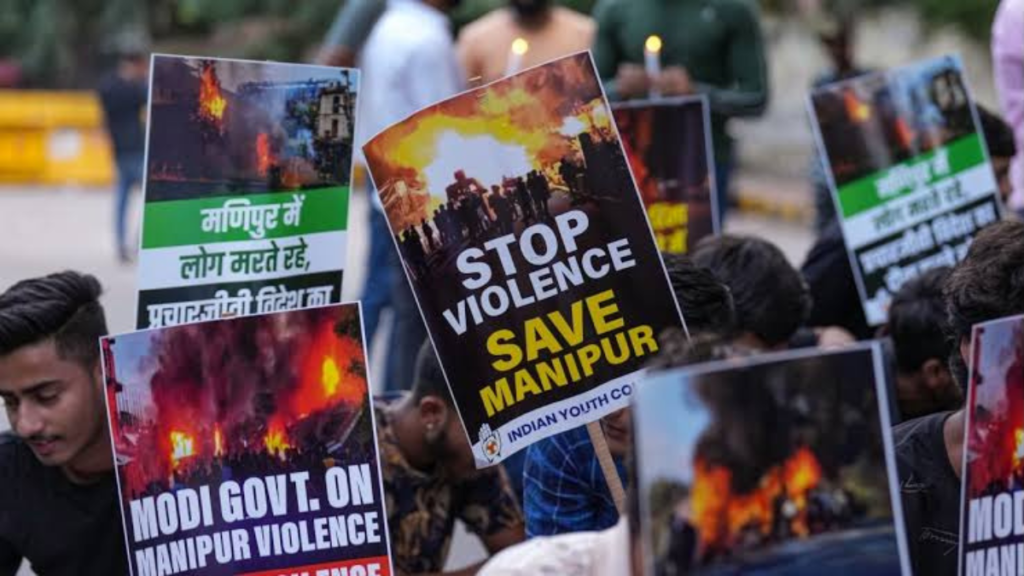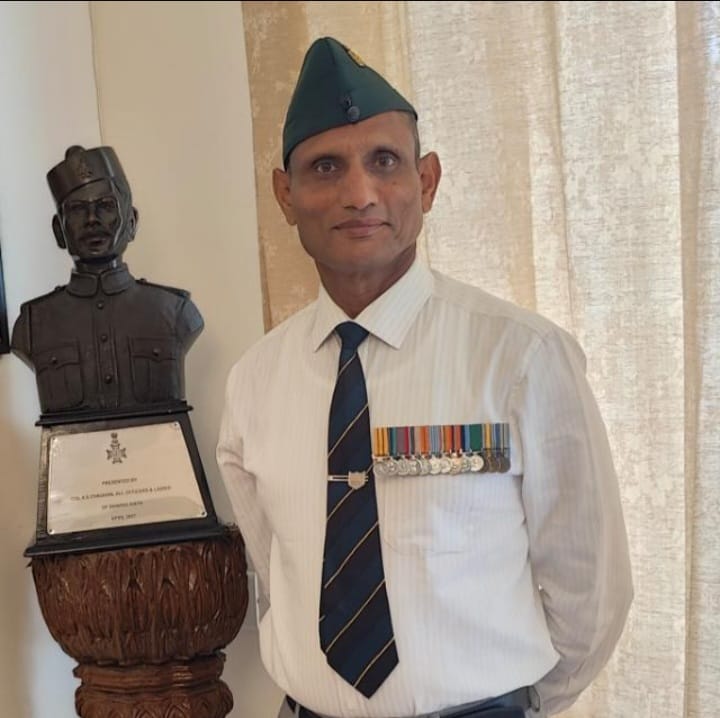By Rtd Maj Gen Gajinder Singh
Background
The communal or tribal conflict currently raging in Manipur is deeply linked to ethnicity, religion, economy and politics of the North East which provides the structural basis for ever widening differences. The entire North East is a fractured melting pot of ethnicities which have originated from Myanmar, Tibet and the Indian mainland. Their unique identities have been accentuated by tribal and religious affiliations and their differences existing for centuries have been reinforced further due to slow pace of population mobility, compulsions of the Indian democracy and growing competition for resources. The hill districts of Manipur are inhabited by the sub tribes of Naga and Kuki/Zomi who are 24 and 16 percent of the population respectively whereas the Imphal Valley which is just about 10 percent of the total land mass is inhabited by the 53 percent Meitei. The typical North Eastern tribal and communal differences have always existed in Manipur resulting in frequent inter community clashes.
The Union and the state governments have not been able to control the recurring cycle of violence in Manipur despite imposition of Armed Forces Special Powers Act for a long time. It is so because the successive Governments in Manipur have not been able to address the structural causes of conflict. They have failed to resolve the historical differences between various communities. The same goes for the sharing of political power and meager economic resources which are mostly controlled by the Meitei’s who themselves feel aggrieved as their habitat is restricted to the Imphal Valley and they do not get the benefit of job reservations matching the Naga and Kuki/Zomi.
The end result is that all the communities face poverty, feel dissatisfied, are distrustful of each other while unemployment is high, insurgents exert influence, corruption is rampant, drugs trade is prevalent and weapons have proliferated. These conditions are ripe for conflict and instability thus there is no surprise that violence erupts frequently with disastrous consequences for the entire population.
The clashes of May 2023 were triggered by a solidarity march of the All-Tribal Student Union of Manipur (ATSUM) against the Meitei demand for inclusion in the scheduled Tribe (ST) category which would presumably allow them to buy land in tribal areas. Such kind of protests are a regular affair in other states of India and should have passed more or less peacefully however this event flared up and violence spread over the entire state and continues even today. It has resulted in over 200 killed, 650 injured and thousands of cases of arson. The escalation occurred due to involvement of political organizations, insurgent groups and partisan role of the police and the administration and shows no signs of abetting.

.
Way Forward
The first step in conflict resolution is to change the attitudes which are made up of prejudices, beliefs, perceptions and feelings which can only be altered through a process of reconciliation requiring a sustained inter-community dialogue. India does not have an established tradition of community reconciliation processes although it is a common practice world over. While, it was reassuring to see the Government form a peace committee for Manipur in June itself, however it has been a non-starter due to large size (51 members) and heavy presence of the Manipur Government. It is suggested that the reconciliation process must be owned and led by the affected communities more so women while the Government should remain in the support role.
The most perilous manifestation of any conflict is the physical violence which includes civilian casualties, conflict related sexual violence and destruction of property for which there should be zero tolerance. The insurgent groups in cease fire and suspension of operations camps are major sources of such violence thus should be reined in properly. In fact, it is high time that the talks with them must be concluded and these camps should be closed for good.
There is also no doubt that the state administration has failed to control the situation hence there is a need to fix accountability amongst the political leadership, bureaucracy and the police. The Central Government need to dispense with the policy of distant governance and play a more proactive role in resolving such conflicts.
Despite decades of presence, the security forces in Manipur and the North East have not learnt their lessons well and have no early warning mechanism, inter agency coordination is rudimentary and lack credibility. The repeated spats between the Assam Rifles and the Manipur Police are a pointer towards the poor state of affairs. The key lies in overhaul of the state police forces to overcome deficiencies in training, leadership and neutrality.
Conflicts cannot be resolved without addressing the underlying structural causes which relates to inequality, power sharing and economy. Genuine reform and empowering of the autonomous councils like other states by extending the 6th schedule provisions is a step that can make the tribal communities feel empowered and part of the political system.
The reconciliation process must also resolve the genuine concerns of the Meitei community. There is no reason why the Meitie community should not be accorded the tribal status because despite their relatively dominant position in Manipur, their condition is as bad other tribal communities of the North East.
While working on the overall economic development of the region which is a slow process the Central Government need to focus on employment generation including innovative schemes for facilitating employment of North East workers in other parts of the country.
In conclusion, it is apt to say that India cannot afford perpetual strife and violence in the North East hence there is a need to address the Manipur issue on an emergent basis. The Central Government will have to do innovative thinking and take hard political decisions for lasting peace in the region.
About Maj Gen Gajinder Singh

An alumnus of National Defense Academy Khadakwasla, Major General Gajinder Singh was commissioned into the Garhwal Rifles, one of the finest Infantry Regiment’s of the Indian Army on 08 June 1985. The officer has served in all operational sectors of India in various capacities. He has commanded his battalion in a high-altitude area along Indo-China border, an Assam Rifles Brigade engaged in counter insurgency operations in North Eastern India and a Mountain Division responsible for guarding the Line of Actual Control with China and counter insurgency operations. For his distinguished services he has been awarded “Ati Vishisht Seva Medal” by the President of India in 2019.
He has vast experience in UN peacekeeping operations and has been a military observer in the United Nations Mission in Angola in 1997-98, Chief of Integrated Mission Training at United Nations Mission in Ethiopia and Eritrea in 2003-2004 and Chief of Operations in the United Nations Mission in Sudan 2010-2011.
The officer is a Master of Philosophy from the Indore and Punjab University and a PhD in peace and conflict studies from the Jamia Millia University. He retired from the Army in 2021 and since then is involved in social work. He is a prolific writer and a blogger on matters related to national security, environment and leadership development.